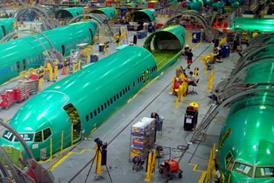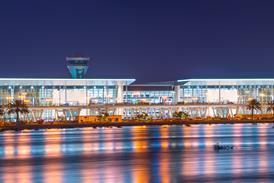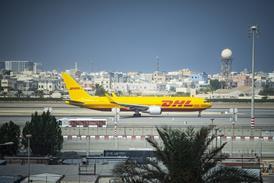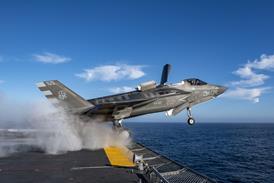UK investigators are urging a safety review of lithium-powered emergency locator transmitters and that measures be taken to inert the Honeywell-built ELT fitted to the Boeing 787.
The recommendations follow the fire which badly damaged an unoccupied Ethiopian Airlines 787-8 (ET-AOP), parked on remote stand 592 at London Heathrow, on 12 July.
Investigators have yet to reach firm conclusions over the source of the fire. But the area of greatest heat damage, in the rear fuselage crown, "coincides" with the ELT's internal mounting location and associated wiring, says the Air Accidents Investigation Branch.
Although the 787 was plugged into a ground power source, with umbilical cables, the stand's power had been switched off - a status visually confirmed by an engineer in the cockpit before he vacated the jet.
"There are no other aircraft systems in this vicinity [of the ELT] which, with the aircraft unpowered, contain stored energy capable of initiating a fire in the area of heat damage," says the inquiry.
Firefighters summoned to the 787 sprayed the aircraft with water and foam, and unplugged the umbilical cables as a precaution. They entered through a forward left-hand passenger door, encountering thick smoke, and saw signs of fire above rear ceiling panels in the cabin.
Attempts to tackle it with a handheld halon extinguisher were unsuccessful, so a ceiling panel was moved and the fire was put out with water hoses.
"Had this event occurred in flight it could pose a significant safety concern and raise challenges for the cabin crew in tackling the resulting fire," says the AAIB.
Honeywell's Rescu406AFN transmitter, which contains lithium-manganese dioxide batteries, has become the focus of the probe.
The company has manufactured around 6,000 units of the same design but the AAIB points out that the incident appears "extremely rare", with the 787 fire the "only significant thermal event" involving the 406MHz device.
Examination of the ELT indicates a degree of "disruption" to the battery cells, but it adds: "It is not clear, however, whether the combustion in the area of the ELT was initiated by a release of energy within the batteries or by an external mechanism such as an electrical short.
"In the case of an electrical short, the same batteries could provide the energy for an ignition and suffer damage in the subsequent fire."
The 787 sustained extensive heat damage in the upper part of its rear fuselage and significant thermal effects on the insulation and composite aircraft structure.
"Detailed examination of the ELT and the possible mechanisms for the initiation and sustaining of the fire in this aircraft continues," says the AAIB.
Investigators have recommended that a safety review of lithium-powered ELT installations be conducted and that the US FAA commences action for "making inert" the ELT fitted to the 787 ahead of any subsequent airworthiness directives.
Source: Air Transport Intelligence news























